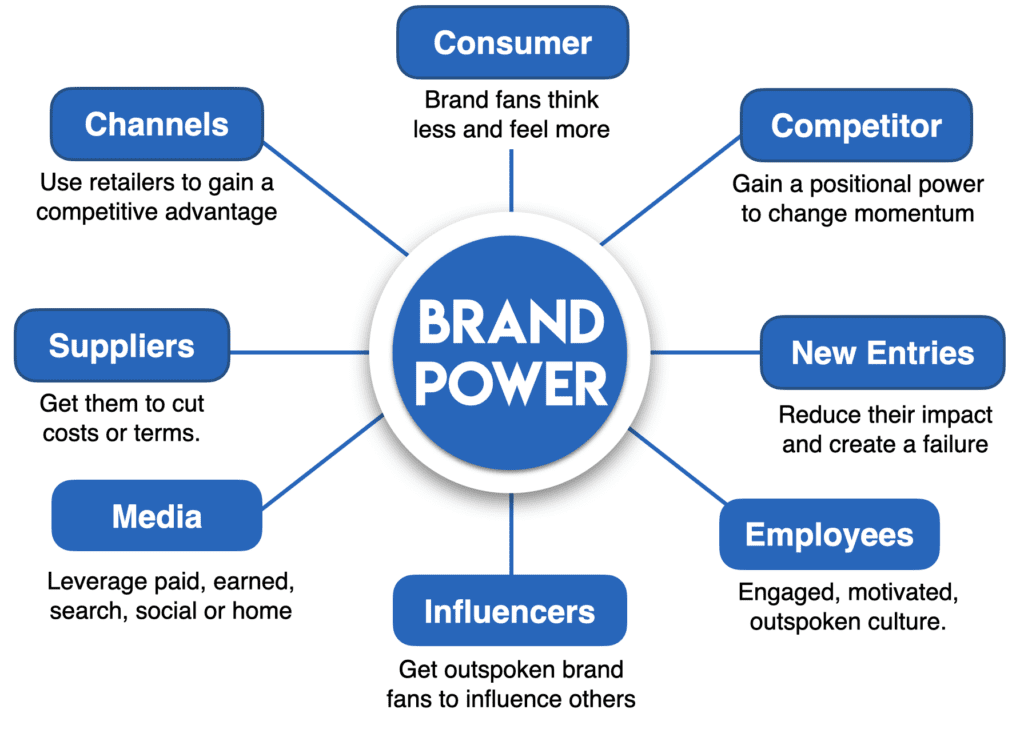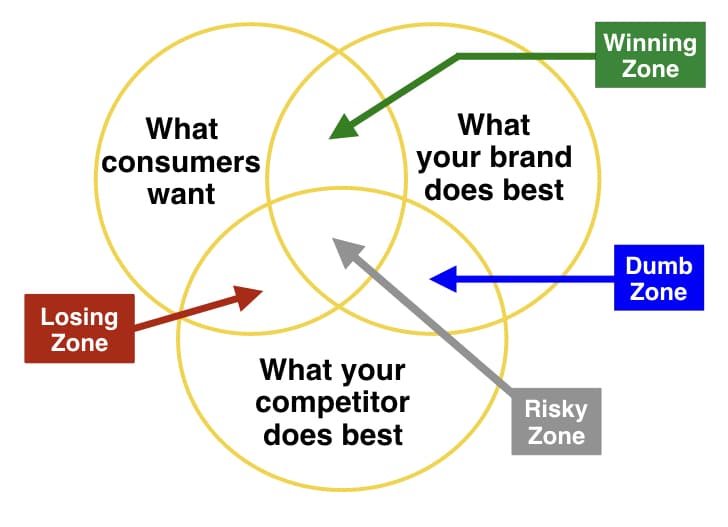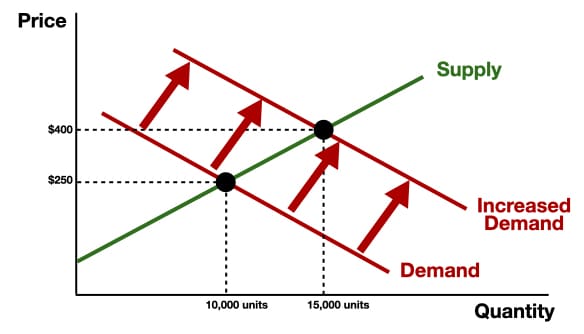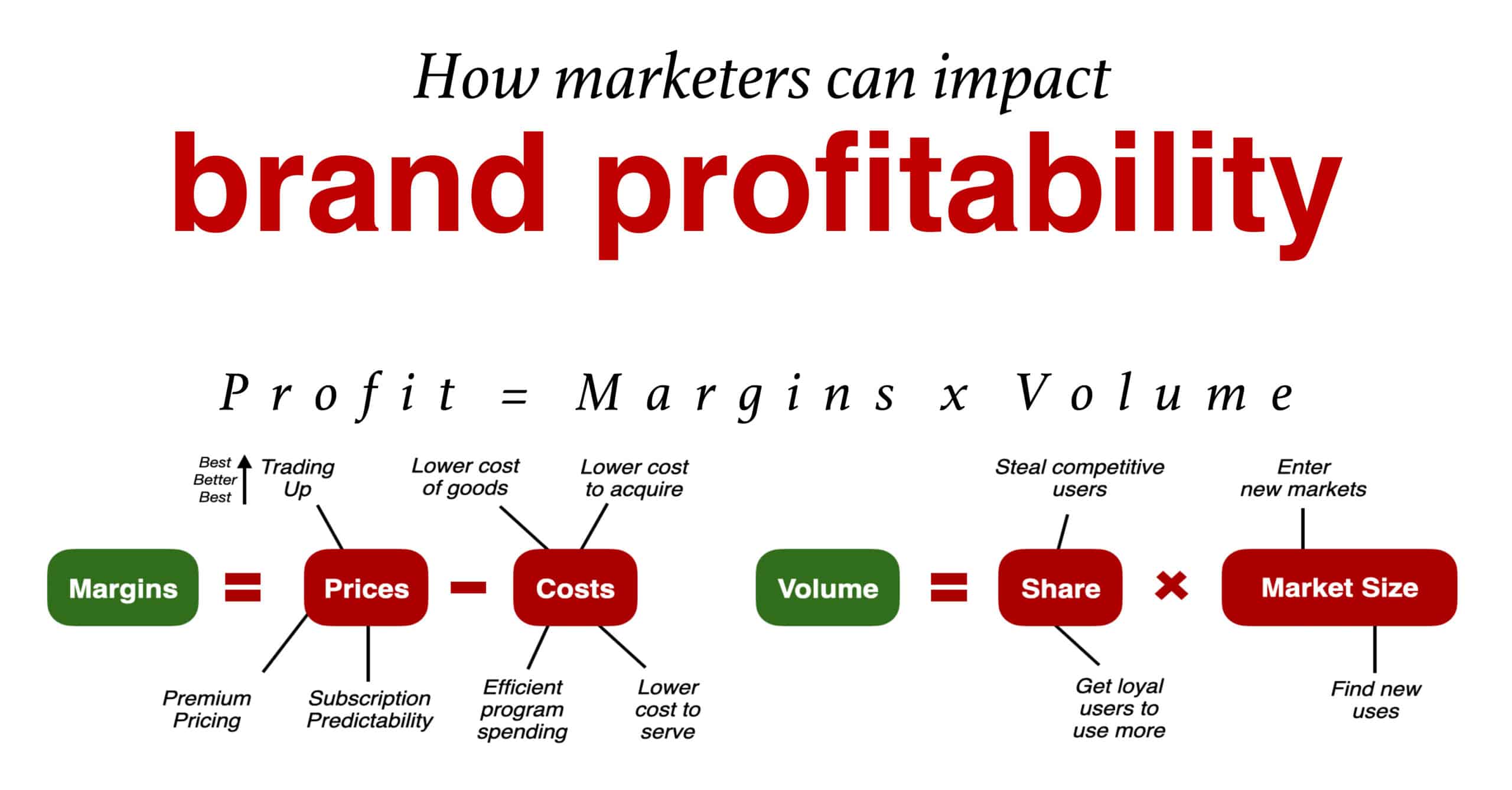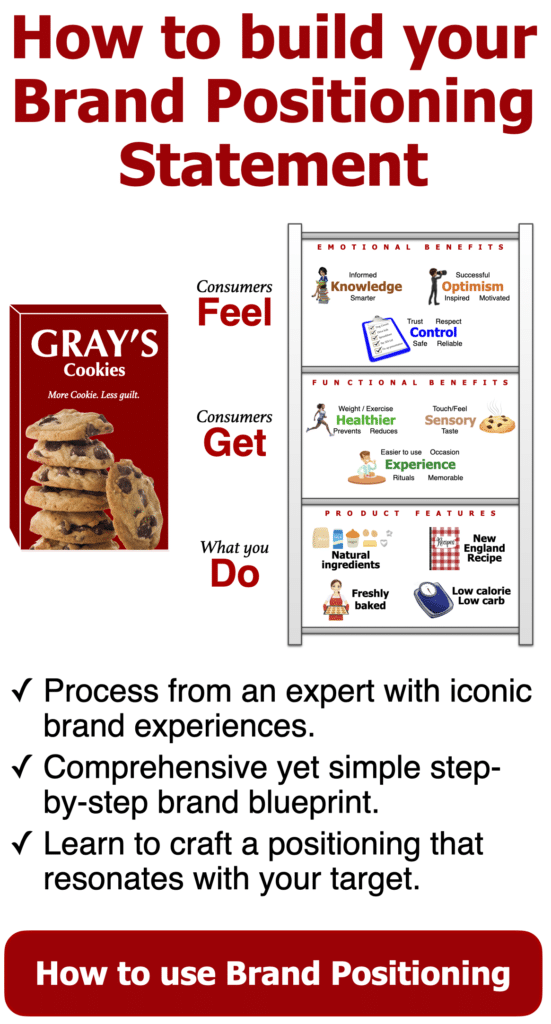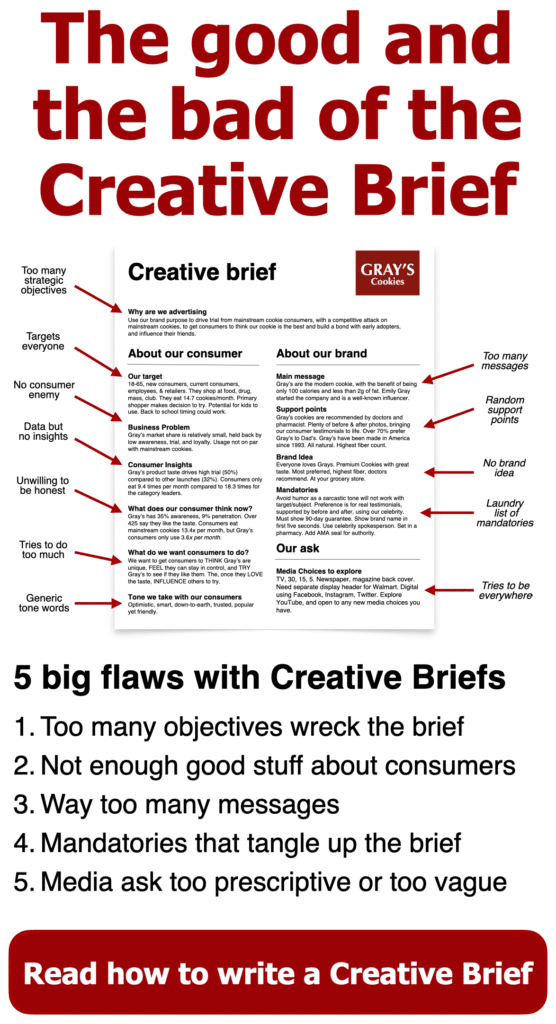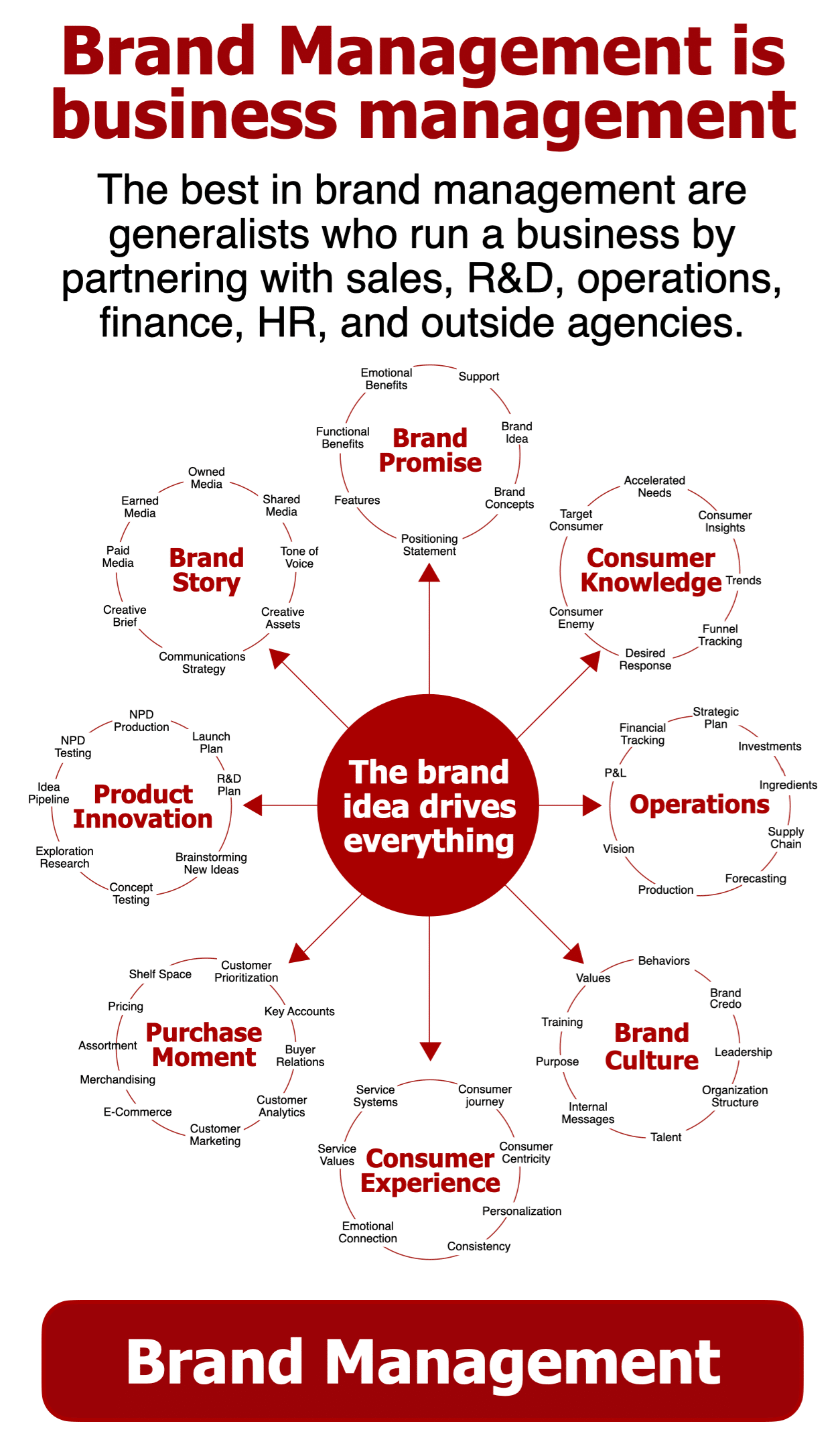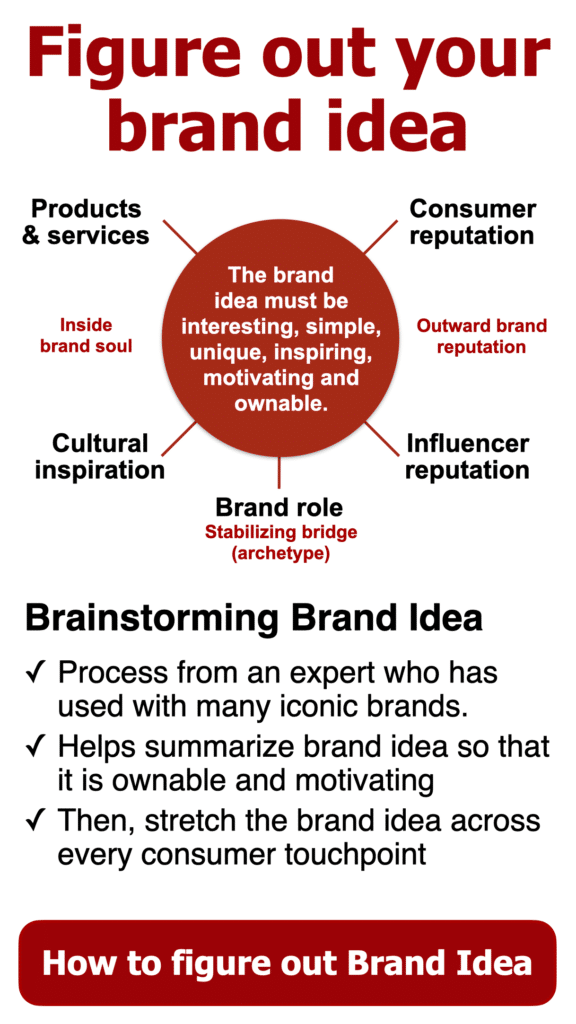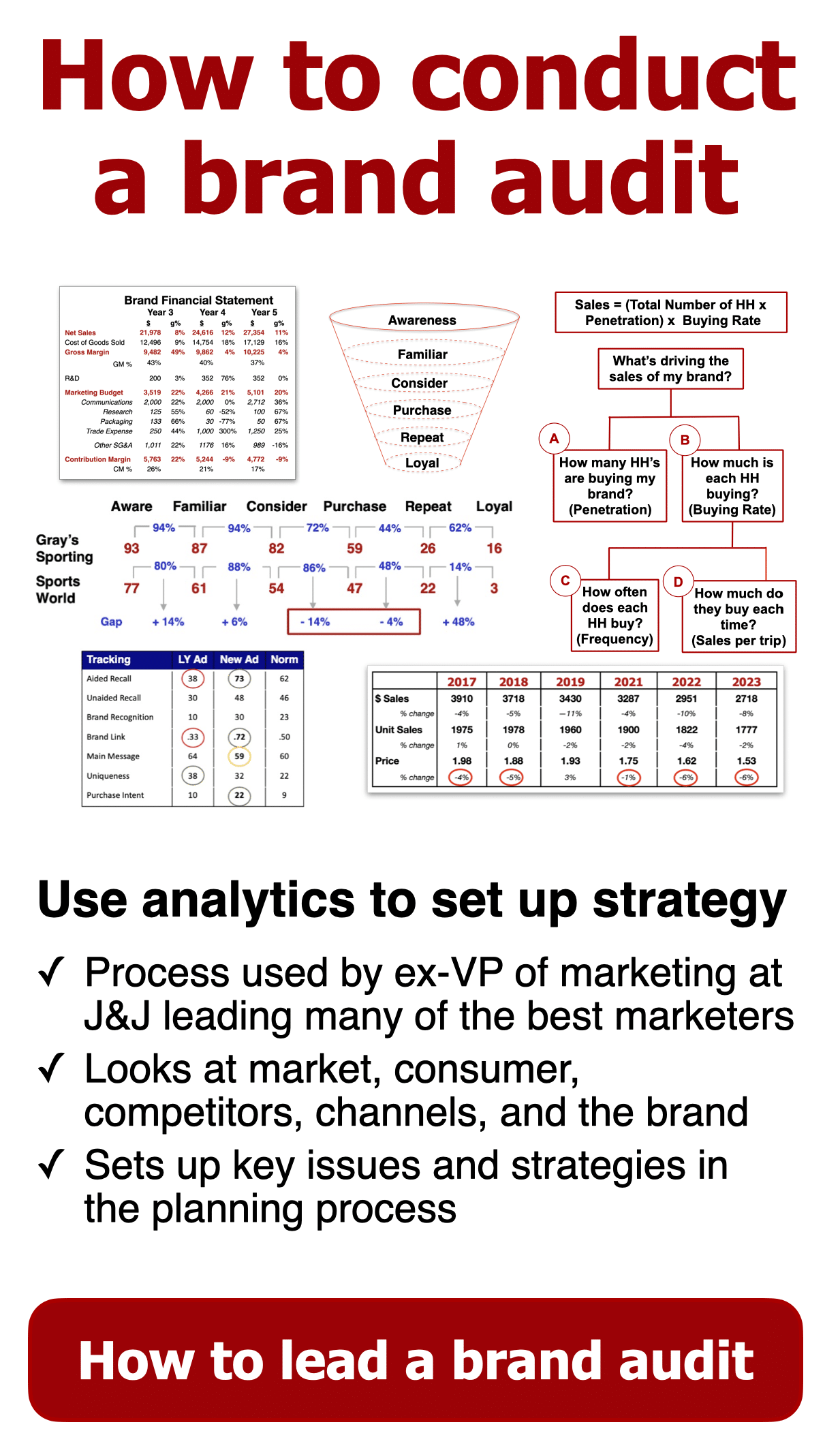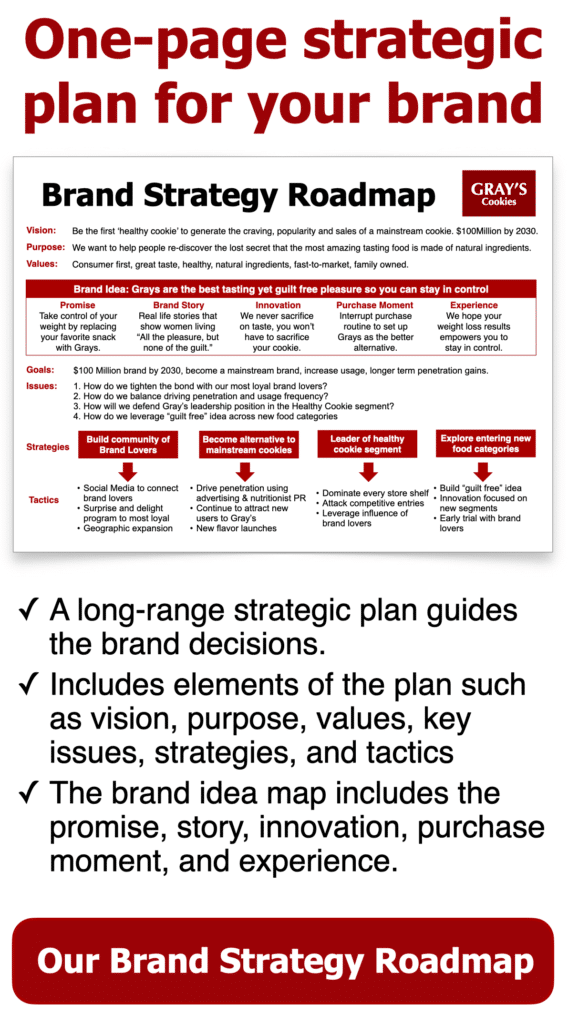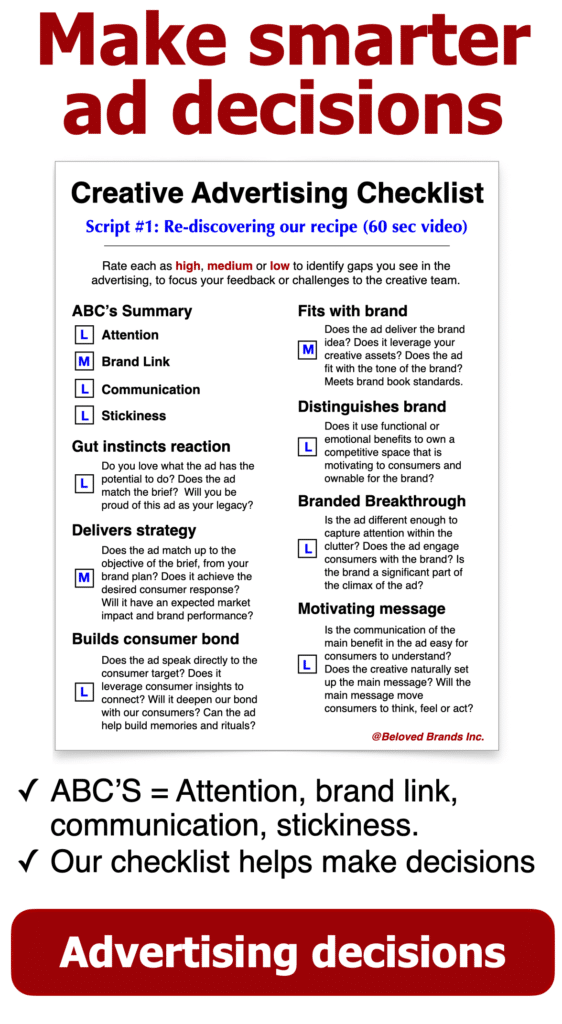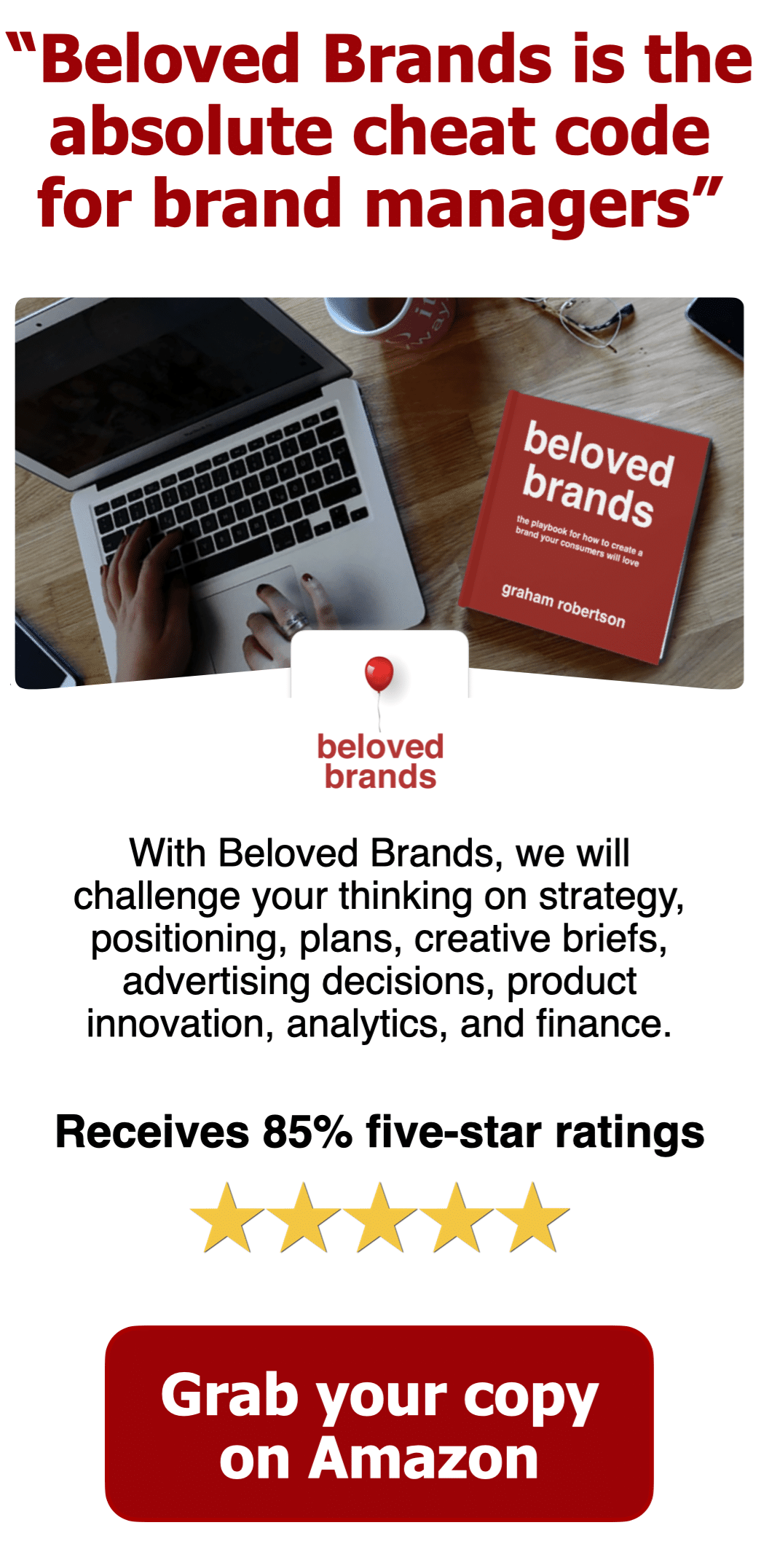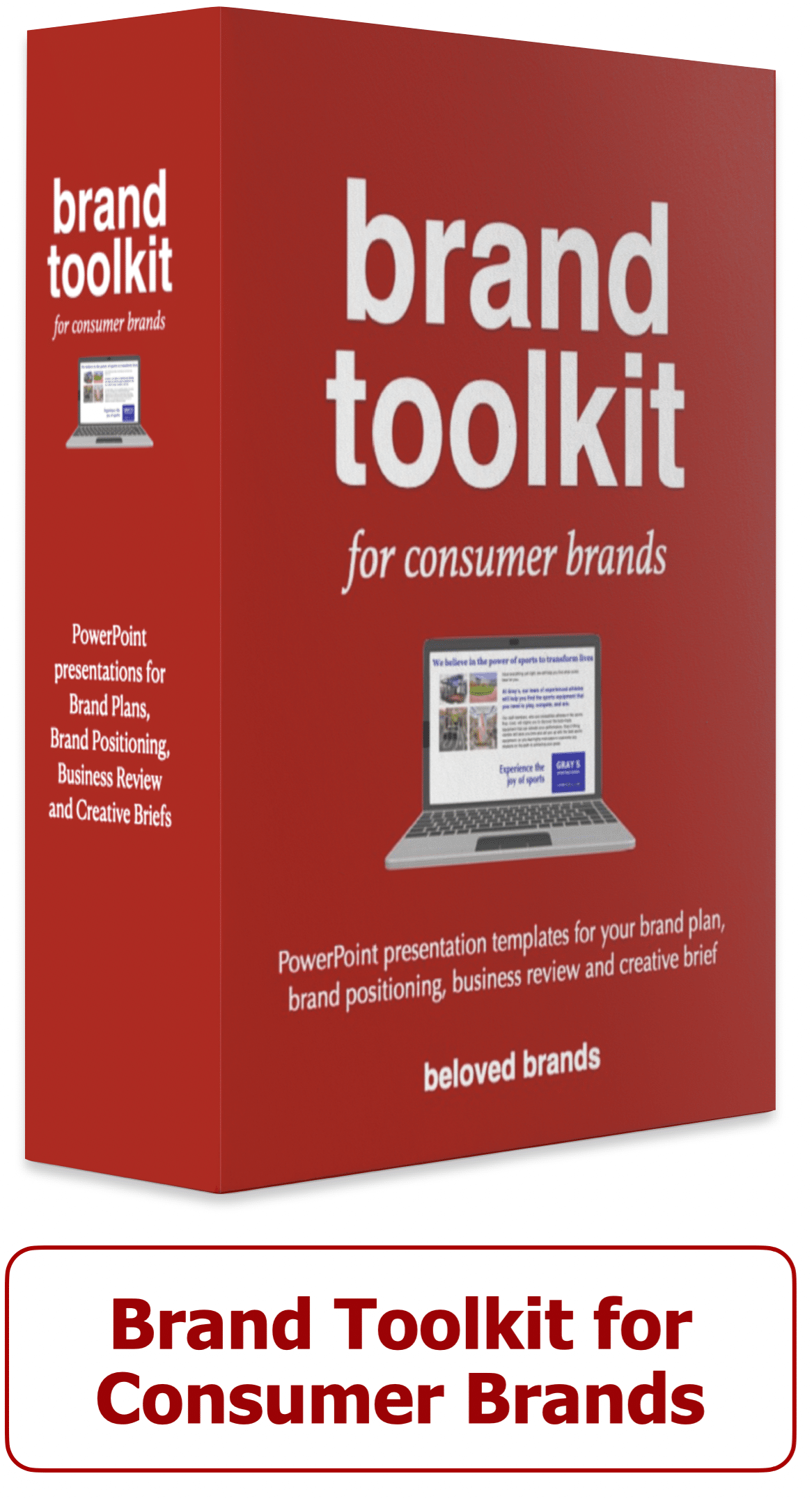When I was in business school, I learned about Michael Porter’s model as a way to understand the five forces that outline an industry attractiveness and competitive intensity. Porter’s Model a great starting point to get you to think more strategically and how you can win through power. However, I want to show you how brand leaders can go beyond Porter’s Model and start to see other sources of power, which reinforces our idea that the more loved a brand is by consumers, the more powerful and profitable that brand will be. I see brand love as a stored energy that can be used to drive further power and brand profit.
To illustrate, click to zoom in on our sources of brand power.
Brand Love
How tightly connected is your consumer to your brand?
I first came up with the idea of a brand love curve when I ran a marketing department with 15 different consumer brands, which exhibited various degrees of success. Honestly, it was hard for me to keep track of where each brand stood. Also, I did not want to apply a one-size-fits-all strategy to brands with dramatically different needs.
I could have used some traditional matrix with market share versus category growth rates or stuck with revenue size versus margin rates. Every day on the job, I noticed brands that had created a stronger bond with their consumer outperformed brands that lacked such a close connection. I started to refer to the high-performance brands as “beloved” because I could see how emotionally engaged consumers were with the brand.
At the other end of the scale, I referred to the inferior performance brands as “indifferent” because consumers did not care about them. They failed to stand for anything in the consumer’s mind; they were not better, different, or cheaper. I could see how these brands were unable to create any connection with their consumers – and they faced massive declines.
M A R K E T I N G B O O K
beloved brands
the playbook for how to create a brand your consumers will love
Covering every aspect of brand management, it is no wonder that our readers reach for Beloved Brands multiple times each week to guide them through the challenges of day-to-day brand management.
Get ready for a mind-bending journey as we take you on a deep dive into your brand strategy. We’ll challenge you with thought-provoking questions designed to shake up your thinking and help you see your brand in a whole new light. And our unique process for defining your brand positioning will leave you with fresh ideas and new possibilities for how to differentiate your brand.
But we won’t just leave you with ideas – we’ll show you how to turn them into action. Learn how to write a brand plan that everyone can follow, ensuring that all stakeholders are aligned and contributing to your brand’s success. We’ll walk you through the creative execution process, from writing an inspiring brief to making smart and breakthrough decisions.
And when it comes tao analyzing your brand’s performance, we’ve got you covered. Our innovative methods will help you dive deep and uncover insights you never knew existed, giving you the knowledge you need to make the best decisions for your brand’s future.
But don’t just take our word for it – our Amazon reviews speak for themselves.
With over 85% of our customers giving us a glowing five-star rating and an overall rating of 4.8 out of 5.0, we know we’re doing something right. And with numerous weeks as the #1 bestseller in brand management, you can trust that we have the experience and expertise to help you achieve success.
Ready to join the ranks of the Beloved Brands community? Order our book on Amazon, Rakuten Kobo, or Apple and start your journey towards brand success today.
Take a read through our sample chapter on strategic thinking
Beloved brands have it easier
Everything seemed to work better and easier for beloved brands. New product launches were more impactful because the brand’s loyal consumers were automatically curious about what was new. Retailers gave these the beloved brands preferential treatment because they knew their consumers wanted them. With a beloved brand, retailers knew their consumers would switch stores before they switch brands. Everyone in my organization, from the President to the technician in the lab, cared more about these beloved brands. No one seemed to care about the indifferent brands. Internal brainstorm sessions produced inspiring ideas on beloved brands, yet people would not even show up for brainstorms on indifferent brands.
I found that everyone wants to be part of a beloved brand
Our agencies bragged about the work they did on beloved brands. Even my people were more excited to work on these beloved brands, believing a move to the beloved brand was a big career move while being moved to an indifferent brand was a career death sentence.
These beloved brands had better performance results and better consumer tracking scores on advertising. They saw a stronger return on marketing investment, with a better response to marketing programs, higher growth rates, and higher margins. The overall profitability fuelled further investment into beloved brands.
Brand strategy
It takes a strategic mind to figure out brand love
What would you rather have; a monopoly or a brand that is loved by consumers? Who has greater margins and profits; the monopoly utility company or Apple, Amazon, Netflix or Nike?
To show the differences in how consumers feel about a brand as they move through five stages, I created the brand love curve. It defines consumers’ feelings as unknown, indifferent, like it, love it and onto the beloved brand status.
For unknown brands, the strategic focus should be to stand out so consumers will notice the brand within a crowded brand world. For indifferent brands, the strategy must establish the brand in the consumer’s mind so they can see a clear point of difference.
At the like it stage, the strategy is to separate the brand from the pack, creating happy experiences that build a trusted following.
Building an emotional bond
At the love it stage, the focus shifts to tugging at heartstrings to tighten the bond with the most loyal brand fans. At the beloved brand stage, the strategic challenge is to create outspoken, loyal brand fans who are willing to whisper to their friends on the brand’s behalf.
The tighter the bond a brand creates with its consumers, the more powerful the brand will become with all stakeholders. Think of brand love as stored energy a brand can unleash in the form of power into the marketplace. You can use that power with consumers, competitors, new entries, employees, influencers, media, suppliers, and channel partners.
And, let’s see how Porter’s Model helps explain power.
Let’s take a spin with Porter’s Model and see how a beloved brand plays out
These beloved brands command power over the very consumers who love them, as consumers feel more and think less. These consumers pay price premiums, line up in the rain, follow the brand as soon as it enters new categories, and relentlessly defend the brand to any attackers. They cannot live without the brand.
As your brand moves to the loved and beloved stages, the power shifts from the buyers to the brand. Porter’s model talks about the power over buyers. We see that consumers start to feel more and think less. They become outspoken brand fans who can’t live without the brand. Your brand is becoming a favorite part of their life, built into their normal routines. These brand fans defend you, sell you and crave you at times.
Beloved brands have power over channel customers, who know their consumers would switch stores before they switch brands. Stores cannot stand up to the beloved brand; instead, they give the brand everything in negotiations. The beloved brand ends up with stronger store placement, better trade terms, and better promotions from retail partners.
The competitors, whether current competitors or new entries, cannot match the emotional bond the beloved brand has created with their brand fans.
Porter's model of competitive forces
Go beyond Porter's Model to assess the power of a brand
Let’s add in a few variables of power that Porter’s Model might have missed.
The beloved brand also has power over the media whether it is paid, earned, social, or search media. With paid media, the beloved brand gets better placement, cheaper rates and they are one of the first calls for possible brand integrations. The beloved brand is considered newsworthy, so they earn more free media via mainstream media, expert reviews, and bloggers.
Being a famous, beloved brand helps bypass the need for search engine optimization (SEO). The beloved brands become part of the conversation whether it is through social media or at the lunch table at work. Beloved brands can use their homepage website to engage their most loyal users, inform the market of upcoming changes, allow consumers to design their version of the brand, and then sell the product directly to brand lovers.
The beloved brands have power over key influencers, whether they are doctors recommending a drug, restaurant critics giving a positive review, or salespeople at electronics shops pushing the beloved brands. These influencers become fans of the beloved brand and build their own emotions into their recommendations.
Beloved brands even have power over employees, who want to be part of the brand. They are brand fans, who are proud to work on the brand. They embody the culture on day 1 and want to help the brand achieve success.
Competitive strategy
To find the competitive space in which your brand can win, I introduce the Venn diagram of competitive situations. Looking below, the first circle should list out everything the consumer wants. The second circle then lists everything your brand does best. And, finally, the third circle lists everything your competitor does best.
To illustrate, click to zoom in on our competitive strategy diagram.
The Venn diagram helps illustrate the conceptual thinking of brand positioning. We start with what consumers want, what your brand does best, and what your competitor does best. These three circles highlights our winning zone, losing zone, dumb zone, and risky zone.
Regarding marketing war games, I will use this Venn diagram to map out four types of competitive strategy situations:
- Power players
- Challenger brands
- Disruptor brands
- Craft brands.
Profitability
Brand love means brand profits
In the simplest of economics, a beloved brand will use their consumer desire to create more demand which drives up the volume and the price.
When we look at brand profit, a beloved brand can drive higher margins because they can command a premium price and can use their volume to drive lower costs.
The beloved brand wins on volume because of the share of the market and the ability to expand that market size. That drives down the costs–both product related and marketing costs. As a result, brand profit goes up.
To illustrate, click to zoom in on our brand profit breakout.
Brand profit
The 8 ways a beloved brand drives higher profits
With all the love and power the beloved brand generates, it becomes easy to translate that stored power into sales growth, profit, and market valuation. Here are the eight ways a brand can drive profits:
- Premium pricing
- Trading up on price
- Lower cost of goods
- Lower sales and marketing costs
- Stealing competitive users
- Getting loyal users to use more
- Entering new markets
- Finding new uses for the brand.
To illustrate, click to zoom in on our brand profit breakout.
Beloved brands can use higher prices and lower costs to drive higher margins
Most beloved brands can use their loyal brand lovers to command a premium price, creating a relatively inelastic price. The weakened channel customers cave in during negotiations to give the brand richer margins. Satisfied and loyal consumers are willing to trade up to the next best model. A well-run beloved brand can use their high volume to drive efficiency, helping to achieve a lower cost of goods structure.
Not only can beloved brands use their growth to drive economies of scale, but suppliers will cut their cost to be on the roster of the beloved brand. The beloved brand will operate with much more efficient marketing spend, using their power with the media to generate lower rates with plenty of free media. Plus, the higher sales volumes make the beloved brand’s spend ratios much more efficient. The consumer response to the marketing execution is much more efficient, giving the brand a higher return on investment. This helps drive brand profit.
Beloved brands use higher shares of a bigger market to drive higher volume
The beloved brands use their momentum to reach a tipping point of support to drive higher market shares. They can get loyal users to use more, as consumers build the beloved brand into life’s routines and daily rituals.
It is easier for the beloved brands to enter new categories, knowing their loyal consumers will follow. Finally, there are more opportunities for the beloved brand to find more uses to increase the number of ways the beloved brand can fit into the consumer’s life. This leads to added brand profit.
A century ago the best stock performers were commodities and monopolies. Today the best stock performers are the beloved brands whether it’s Apple Amazon Netflix or Tesla. I would rather run to beloved brand than a monopoly. The reason: more brand profit.
To illustrate, click to zoom in on our brand profit breakout.
Strategic Thinking
Articles that will improve your strategic thinking skills
To start, take the opportunity to improve your strategic thinking skills. Look to the five steps to building an effective brand strategy.
We show how to use our Strategic ThinkBox, and lay out the five elements of strategic thinking. Next, go deeper on to challenge your brand’s core strength, engage with consumer strategy, or competitive strategy.
Undoubtedly, you must understand the business situation before making your next move. We show how to write the ideal strategy statements you can use in your marketing plan.
As you move to the marketing execution, you need to use in-the-box creativity to stay on strategy. Importantly, marketers need to understand pricing strategy, social media strategy, and product innovation.
If you are a B2B marketer, look at at how to use our B2B Strategic ThinkBox.


